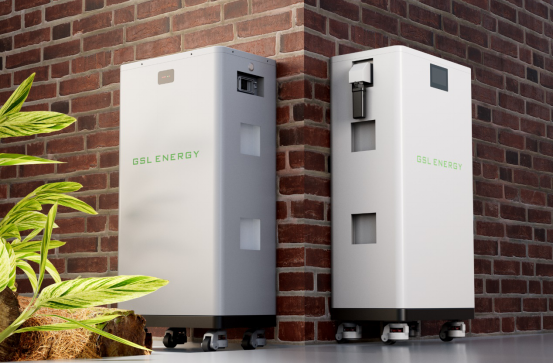The Future of Home Energy: Innovations in Battery Storage Solutions
Redefining Residential Power with Smart, Efficient, and Sustainable Technology
In a world where energy efficiency, resilience, and sustainability are becoming household priorities, traditional power grids and basic home setups are being left behind. The future of home energy lies in intelligent battery storage systems—technology that doesn’t just store electricity, but optimizes its use, balances loads, and interacts with the broader energy ecosystem. As solar panels continue to rise on rooftops and electric vehicles roll into driveways, battery innovations are bridging the gap between supply, demand, and independence.
Why Battery Storage Is More Crucial Than Ever
The energy scene is going through a change. Concerns about climate, increasing utility expenses, and unstable power grids have made homeowners reconsider how they use and store electricity. A key part of this change is residential energy storage—the capacity to store power during off - peak times or when solar production is high and use it later when demand is strong or power outages happen.
Battery storage not only assists homeowners in saving on energy costs but also boosts self - reliance, lessens the burden on local grids, and is vital for emergency readiness. Modern systems can immediately react to power cuts, guaranteeing a continuous supply to essential appliances without the delay of starting a generator.

The Development of Home Battery Technology
A decade ago, home energy storage was costly, large, and had limited functions. Most systems were based on lead - acid, providing moderate capacity and a short cycle life. Today, innovation has changed the situation. Most advanced home batteries are now lithium - ion, specifically LiFePO₄ (Lithium Iron Phosphate), which has a longer lifespan, higher safety, and better thermal stability than other chemistries.
Furthermore, systems are becoming modular and expandable. Homeowners can begin with a small battery and enlarge it as their energy requirements increase—adding solar panels, electric vehicles, or heat pumps in the process. When paired with smart inverters and user - friendly energy management software, these systems offer real - time information, adaptable performance, and remote control features via mobile apps.
Smart Integration: The Rise of Energy Management Systems
At the heart of today’s advanced battery storage solutions is software intelligence. These platforms manage when and how your battery charges or discharges, often using AI or algorithm-based forecasting to anticipate energy needs based on your habits, local weather, and utility rates.
For example, during times of time-of-use pricing, your battery may draw from stored energy during peak-cost periods and recharge from the grid or solar panels when electricity is cheaper. If a blackout is forecasted, the system might automatically prioritize backup charge, preserving energy for essential circuits. This kind of predictive behavior turns the home into a dynamic energy hub.

Backup Power Without Compromise
Unlike gas generators that are loud, high-maintenance, and reliant on fossil fuels, home battery storage is silent, clean, and always ready. In the event of a grid outage, batteries can take over in milliseconds—no fumbling with switches or waiting for startup. Modern systems can prioritize key appliances like refrigerators, medical equipment, Wi-Fi routers, or even HVAC systems depending on battery size and setup.
Some products now offer seamless integration with home automation platforms, allowing users to remotely activate or deactivate circuits, monitor power usage room-by-room, and even respond to emergency alerts with automated energy-saving modes.
Sustainability and Financial Incentives
One of the greatest advantages of modern battery storage is its contribution to sustainability. When paired with rooftop solar, homeowners can dramatically reduce their carbon footprint by consuming clean, locally generated energy rather than relying on fossil-fuel-heavy grids. As countries move toward decarbonization targets, residential storage is expected to play a central role.
Governments around the world are encouraging adoption through incentives and rebates. In the U.S., for instance, the federal Investment Tax Credit (ITC) allows homeowners to deduct a portion of the cost of solar-plus-storage systems. Some states and utilities offer additional rebates or time-based incentives that reward homeowners for using stored energy during grid stress events.
Making the Transition: What Homeowners Should Consider
Before investing in a battery storage system, homeowners should assess:
- Energy consumption patterns: Identify which appliances or systems need backup.
- Solar compatibility: Determine how your current or future solar panels will integrate.
- Battery size and modularity: Choose a system that fits your current needs but can scale over time.
- Software and monitoring tools: Opt for systems with transparent, user-friendly control.
- Installation and support: Work with certified professionals to ensure safety and optimal performance.
Final Reflections
Home battery storage is no longer merely a specialized innovation—it's turning into a crucial part of how we supply power to our homes. As technologies advance, prices drop, and environmental consciousness rises, more families will opt for intelligent energy solutions that provide security, autonomy, and sustainability. The future of home energy doesn't solely reside in power generation, but in how we store, handle, and engage with it. With contemporary battery storage systems, the home is transforming into a robust microgrid—one that addresses the world's energy challenges with wisdom, adaptability, and intent.


